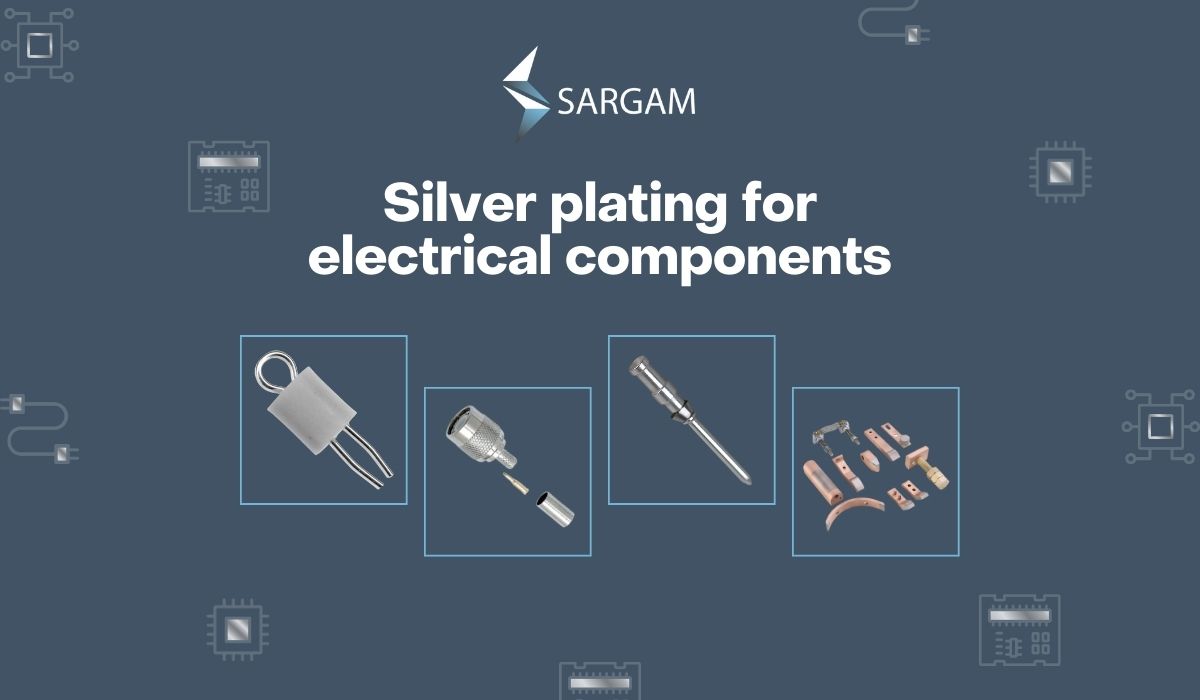Silver plating: Improve performance of electrical components
Silver plating is a popular process for improving the performance of electrical components. These components often require a high level of conductivity, corrosion resistance and durability. Sargam silver plating service is one of the most effective ways to achieve these properties.
In this blog, explore the benefits of silver plating for electrical components, the process and methods involved, the range of applications and the factors that need to be considered for success.
Benefits of Silver Plating for Electrical Components
Silver is an excellent conductor of electricity, making it an ideal material for electrical components. Silver plating can increase the conductivity of components, resulting in faster and more efficient electrical transmission.
- In addition to conductivity, silver plating also provides corrosion resistance, which is important in many electrical applications. Silver is highly resistant to oxidation and other forms of corrosion, which can help to extend the life of electrical components.
- Another benefit of silver plating is its durability. Silver is a hard, durable metal that can withstand wear and tear. This makes it an excellent choice for electrical components that are exposed to high levels of stress or mechanical wear.
- Additionally, silver plating can improve the appearance of components, making them more aesthetically appealing and easier to handle.
Process and Methods of Silver Plating
The silver plating process typically involves several steps, including cleaning and preparing the surface of the component, applying the silver plating solution and then rinsing and drying the component. There are several methods of silver plating that can be used for electrical components, including electroplating, electroless plating, brush plating and immersion plating.
Electroplating is the most common method of silver plating for electrical components. It involves immersing the component in a silver plating solution and then applying an electric current to the solution. This causes the silver ions in the solution to adhere to the surface of the component, resulting in a uniform layer of silver.
Process and Silver Plating Process and Methods
Silver plating involves several steps, including surface preparation, cleaning, and plating. The surface of the metal substrate must be thoroughly cleaned and prepared to ensure that the plating adheres properly. This may involve polishing, degreasing, and etching the surface.
Once the surface is clean and prepared, the plating process can begin. There are several methods for silver plating, including:
- Electroplating: Electroplating is the most common method for silver plating. It involves immersing the metal substrate in a solution containing silver ions and applying an electric current. This causes the silver ions to adhere to the surface of the substrate, creating a thin layer of silver plating.
- Electroless Plating: Electroless plating involves using a chemical reaction to deposit the silver onto the surface of the substrate, rather than using an electric current. This method can be used for complex shapes and non-conductive substrates.
- Immersion Plating: Immersion plating involves immersing the metal substrate in a solution containing silver ions and allowing the ions to adhere to the surface of the substrate over time. This method is slower than electroplating but can be useful for plating small or irregularly shaped components.
Silver electroplating applications in the electrical industry
Silver plating has a wide range of applications in the electrical industry, including:
- Connectors and Contacts: Silver plating is commonly used to plate the contacts and connectors in electronic devices, including switches, plugs, and jacks. The increased conductivity and corrosion resistance of the silver plating help to improve the reliability and lifespan of the device.
- Printed Circuit Boards: Silver plating is also used on printed circuit boards (PCBs) to improve conductivity and protect against corrosion. The silver plating can be applied to the PCB traces and vias to improve signal transmission and reduce the risk of failure.
- Power Transmission Components: Silver plating is commonly used on power transmission components, including bus bars, transformers, and relays. The increased conductivity and durability of the silver plating can help to reduce losses and improve efficiency in these components.
Sargam Industries has established itself as a leading provider of selective plating of silver (electroplating) solutions for the electrical industry, catering to a wide range of critical applications. With years of experience and expertise, Sargam has forged strong partnerships with global leaders in the switchgear industry, serving their specific requirements with utmost precision.
From enhancing conductivity and corrosion resistance in electrical contacts to improving the performance and durability of sensitive components, Sargam has consistently delivered reliable and high-quality silver electroplating solutions. Its commitment to meeting the stringent standards of the electrical industry has earned Sargam a reputation as a trusted partner, enabling manufacturers to achieve optimal results in their products while ensuring safety and reliability.

